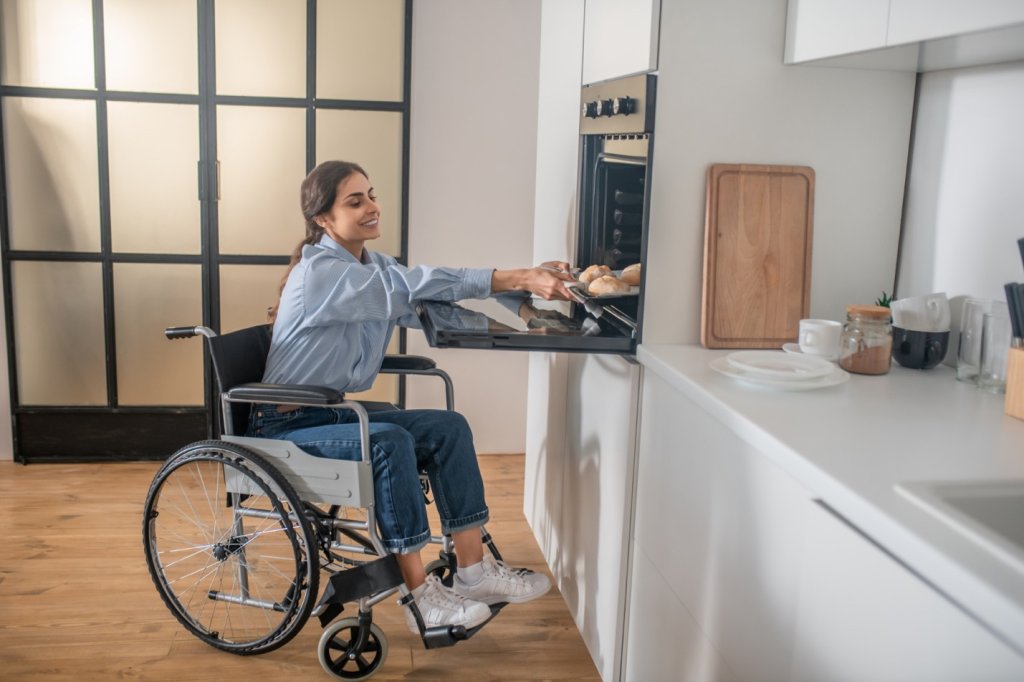As we strive to create a home that resonates with our personalities and values, we must understand that every decision we make during the design process significantly impacts the residents and visitors.
Accessibility in home design revolves around making spaces welcoming and usable for everyone, regardless of age, ability, or mobility. On the other hand, sustainability in home design goes together with our dedication to protecting and caring for our planet. By integrating accessibility and sustainability in our home design, we create spaces that embrace social responsibility and environmental consciousness.
Universal Design for All
Universal Design for All emphasizes inclusivity in home design, including finding Ventilation Solutions for Bedrooms without Windows. By integrating advanced air circulation systems that are both energy-efficient and accessible, we ensure that every room, regardless of its architectural limitations, provides a healthy and comfortable environment for all occupants.
We can ensure that sustainable features benefit everyone by adopting universal design principles. For example, installing energy-efficient lighting saves electricity and helps those with visual impairments by providing better illumination.
A key aspect of universal design at home includes an accessible bathroom. The bathroom in your home must accommodate the needs of individuals with limited mobility. You can revitalize your bathroom by purchasing accessible products from a reputable brand. Some products that can enhance accessibility are walk-in showers, shower seats, and grab bars.
Considering the functional aspects of our living spaces, details like the mantel height over a fireplace play a crucial role in both aesthetic appeal and usability. Ensuring the mantel is positioned at an appropriate height not only enhances the room’s visual balance but also accommodates practical use and accessibility.
Resource-Efficient Materials
Sustainable home design emphasizes using eco-friendly materials with a lower environmental impact. Luckily, many of these materials can align well with accessibility goals. Bamboo, for instance, is a renewable resource that can be crafted into accessible ramps and flooring solutions. It’s strong, durable, and easy on the planet.
Energy-Efficient Accessibility
In the realm of Energy-Efficient Accessibility, incorporating Innovative Kitchen Window Decor Solutions plays a crucial role. By choosing window treatments that enhance natural lighting while minimizing heat loss, we contribute to a kitchen that’s not only accessible but also aligned with our sustainability goals.
Another important factor to consider when creating an accessible space is the location of the controls for the heating, cooling, and ventilation systems. Remember that individuals with limited mobility may require the controls to be situated in an area that is easy for them to reach.
Smart Home Technology
Smart home technology can enhance both accessibility and sustainability. Voice-activated controls and automation allow residents with limited mobility or dexterity to operate various devices efficiently. Innovative home technology can also help people turn on lights, control entertainment systems, or lock doors. The hands-free functionality empowers users to navigate their living spaces effortlessly, fostering independence and convenience in their daily lives.
Smart energy management systems also optimize resource usage, keeping the home environmentally responsible. An example of an innovative home technology useful for sustainability is a smart home energy management system. This system monitors and optimizes the energy consumption of various devices and appliances within the home.
It allows users to remotely control and schedule their energy usage, taking advantage of off-peak hours and reducing wasteful energy consumption. By providing real-time insights into energy usage patterns, users can make informed decisions about their energy usage and identify areas where they can further conserve energy.
By embracing universal design and eco-conscious choices, we can create living spaces that prioritize the well-being of occupants while minimizing their ecological footprint.

